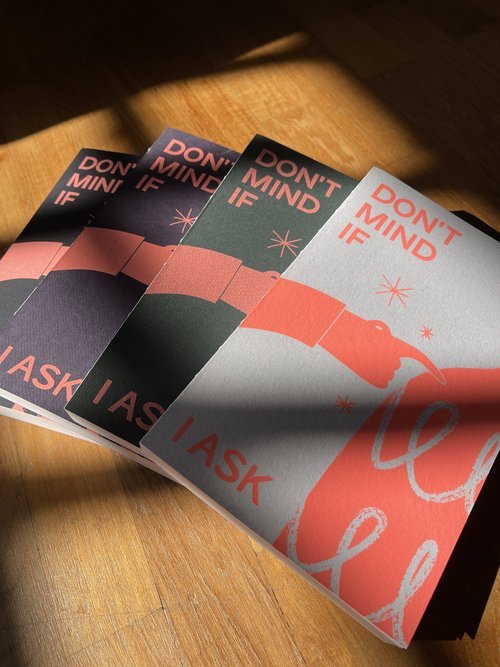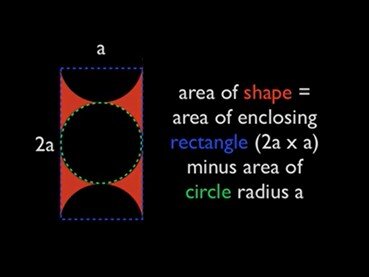
Milton Tan Dreambook
Dreams: a dynamic realm of possibility and the nonsensical, fleetingly masquerading as reality. It is no wonder why Dr. Tan always kept a notebook by his bedside to write or sketch the ideas that would visit through dreams. Taking after its namesake and purpose, this blog shares our ideas, observations and experiences with design and creativity with the hopes that you, in turn, will share yours.

Don’t Mind If I Ask…
Don’t Mind If’s inaugural communications design community and industry survey report provides a much needed and overdue introspection into Singapore’s creative industry. If you’re part of this colourful community, considering a path in it or even just curious, grab a copy and peak at the consolidated perspectives on what makes it tick.

A Decorator Crab’s View on Creativity
Unlike specific octopi or cuttlefish, arguably the masters in the art of camouflage, decorator crabs do not have the natural ability to effortlessly replicate the colours and/ or textures of our environment. Instead, I must invest in my environment in order to pass off as nearly as masterful in this artform. My motives for survival are clearly different from yours as students of creativity. But I believe we share common ground in the pursuit of our respective artforms.

Mind Over Material
There is a little piece of Singapore’s history pocketed in the Changi Chapel & Museum, that zooms in on the artwork of some of the internees of the Changi Garrison. Despite malnutrition, disease and cramped, unsafe/unsanitary living conditions, the internees did their best to maintain their morale, another essential for survival.

The Decennial of the Milton Tan Memorial Fund
We celebrate the MTMF’s contributions to the design community over the last decade, the Fund’s donors, managers and beneficiaries as well as the people and institutions preparing our next generation of creatives.

One of my favourite accounts on creativity
Creative people alter the way we see the world. They introduce the surprising, even shocking, alternative to the things we take for-granted as permanent and unchanging.

Can Creativity be Taught?
We do not need to be formally taught creativity, thinking or language, but it helps if we want to take it to a higher level.

Categorical Error as Creative Insight
“Errors” are often relative and can open up alternative lines of reasoning and creative thought. On the contrary, an obsession to be “correct” can be stifling and promotes a herd mentality.

Where Do Ideas Come From?
In fact, ideas are all around us, but its is like saying knowledge is all around us. But why is it that some people have somehow greater access and see more ideas than others?

The Eternal Value of Emergent Ideas*
Why do we still go on as if the world around us is fixed and permanent? Why do we consider it abnormal or unacceptable when change occurs? How do we inculcate a creative culture that manages change and accepts errors?

‘Offside’ Rules Stifle Creativity
This ‘rule’ is becoming increasingly ridiculous in our multi-disciplinary world where creativity is best found in intersections of disciplines.

Many Ways of Seeing
Much of what we presume as the “real world” is made up in our minds through a complex process of perception, postulations and concept formations; the world as we know it is not ready-made or to be taken as given.

Talent is not Creativity
It is of concern that many — especially those in education — do not make a distinction between talent and creativity.

Rabbit-Duck Figure Revisited
The ability to label parts of an object and obtain a coherent whole is so powerful that we often do not need all the defining information to make and act on the incomplete.

Leonardo’s Rap
Leonardo had used a simple but effective technique for working out compositions which deviated radically from the prevalent method then of the “unfailing line which needed no correction and no second thoughts”.

Alternative Value Propositions
Designers are in a good position to propose alternative value propositions. But they need to be laterally creative and not be so naïve about how bureaucrats and bean-counters work. A creative win-win is often the only way.

Emergent Sub-shapes
Visual perception is a key to creative thinking. If there is a ‘correct’ way to see every thing, our world will be uninteresting.

Another Example of Visual Thinking
There are many exciting possibilities of being able to think visually. They are divergent, exploratory and do not attempt to be ‘correct’

Visual Thinking in Practice
Many know about visual thinking or “visual literacy” but consider it unreliable and ‘fuzzy’. It’s not.

The False Hard-Soft Dichotomy in Education
Is it too much to expect students to acquire the blended “hard skills” and the “soft skills” when such an exemplary quality is a rarity in teachers who are usually from the hard or soft side?

When Productivity is Nonsense
The concept of “productivity” is a hangover from the industrial economy.